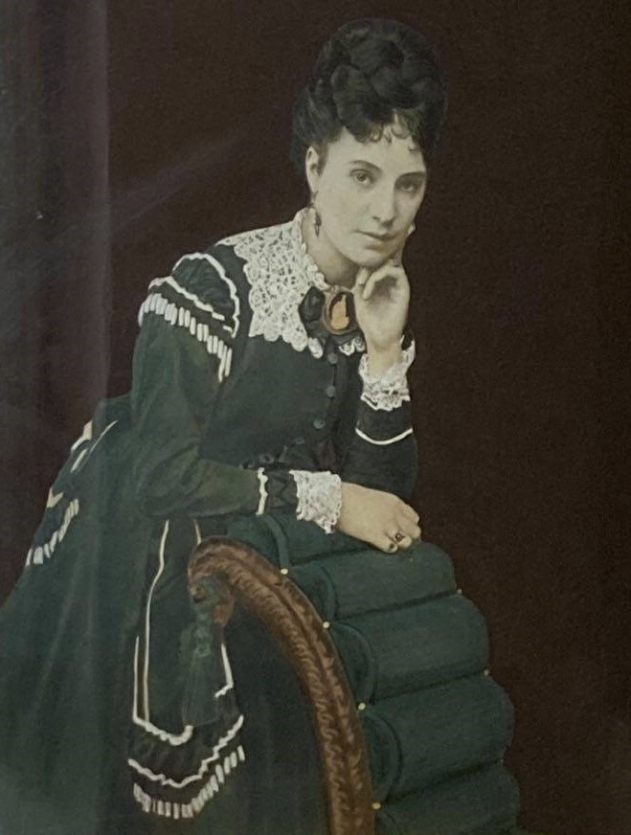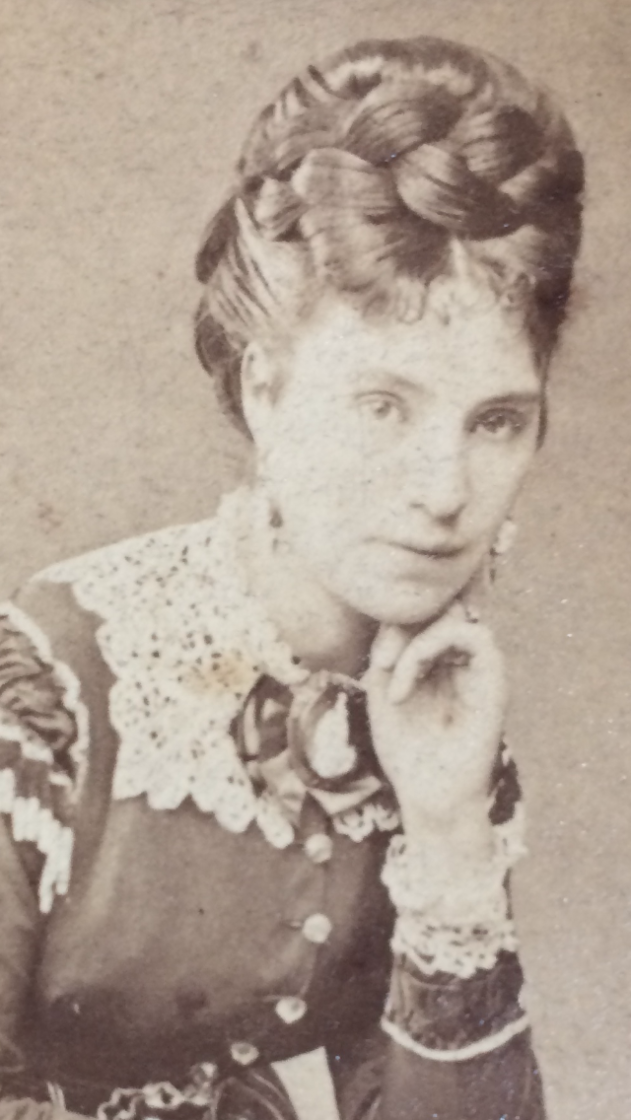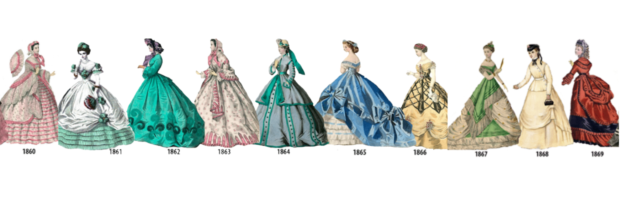1870s Fashion: The popularity of the bustle
Following on from theprevious post in our series on dating old photographs from fashions, we have now reached the 1870s. This decade saw an increase in material spending, with mass production in the Industrial Revolution in full swing. Department store displays, advertising and fashion magazines were now consumed more readily and fashion trends became easier to follow, although the style still reflected social standing.
1870s Women’s Fashion
The early 1870s saw the popularity of the bustle continue. These were set high and attached to crinolines, but lowered as the decade progressed. Bustles were often elaborate items of clothing, with ruffles, gathers and embroidery.
They began to lose their popularity in the mid-late 1870s with the advent of the ‘princess line’. A new style named after Alexandra, Princess of Wales. This favoured an incredibly slim and body-conscious look, with severe corsetry. Skirts became narrower, hoops were out and bustles were smaller. Embellished trains became the new trend.
For upper-class women, the top of the body was stiff and tight. Stiff bodices and huge bustles gave the wearer limited mobility. Upper-class and elite women did not work, so their rigid clothing would separate them from the more practical clothing of the lower classes. A long, slim silhouette was replacing the hourglass figure of decades past. Bodices could be just as decorated as the skirts, but necklines changed into v-necks or a square neckline. With a more revealing neckline, pendants and velvet chokers became fashionable.
In the privacy of homes, tea gowns were introduced. These allowed the wearer to go without the stricter clothing worn outside, although these were only worn in the house and in the company of other females. As the decade progressed, they became more elaborate in style, with frills and lace.
Continuing on from the previous decade, hair continued to be parted in the centre with an emphasis on height and elaborate coiling. The back of the head usually mirrored the back of the skirt, with some women wearing false hairpieces to gather more height. In the mid-1870s, fringes began to make an appearance. These hairstyles brought attention to the face, along with bows and lacy collars on the necklines of clothing.
Shoes and boots had high heels and pointed toes, with stockings to match. These stockings could sometimes be little works of art in themselves, with embroidery or tiny designs.
Capes and cloaks were replaced by coats and jackets, with some coats designed to accommodate the bustle skirts.
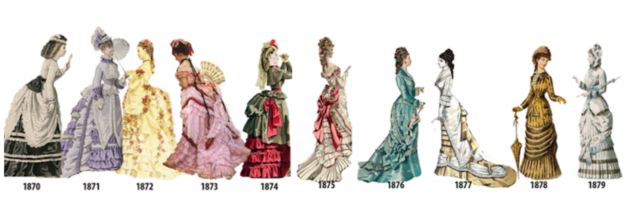
1870s Men’s Fashion
The 1870s saw a move to simpler and more sober styles for men with an aim to look respectable and industrious.
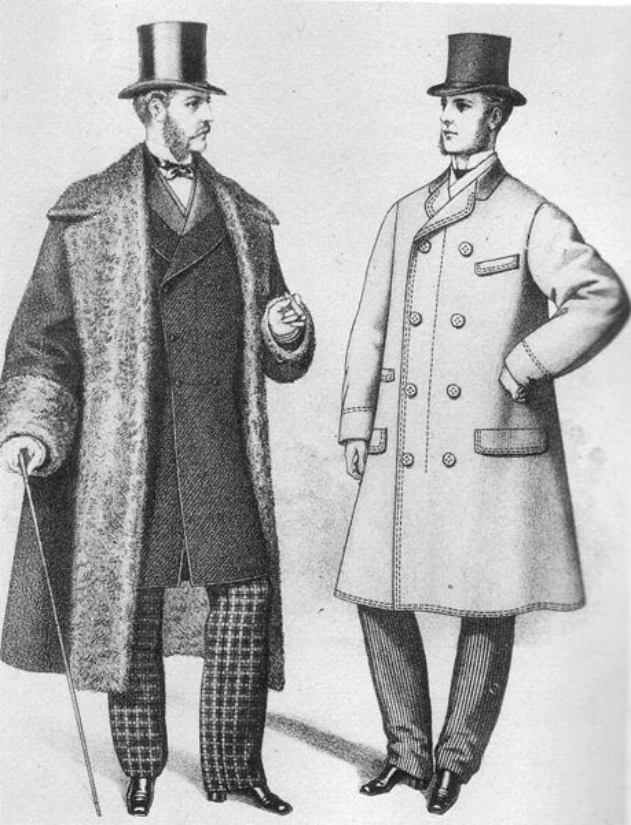
https://en.wikipedia.org/wiki/File:Mens_Coats_1872_Fashion_Plate.jpg
The silhouette became slimmer and shirts plainer. Cropped frock coats were popular in the first half of the decade. The popularity of the lounge (sack) suit continued to increase, especially amongst the lower classes. Usually paired with matching trousers and a waistcoat, it's believed that this style formed the beginnings of the three-piece suit. This style was often topped with a bowler hat.
Hair was cropped and parted neatly. Facial hair was still the norm but was tidied up. Think trimmed moustaches and tidy ‘muttonchops’.
We will be exploring the fashion of the 1880s in our next post.
